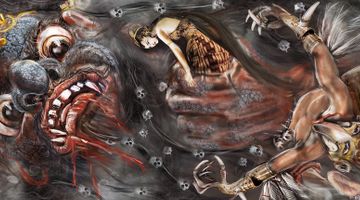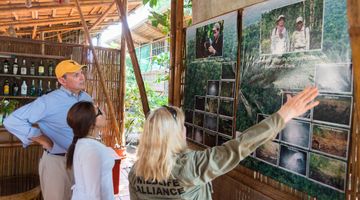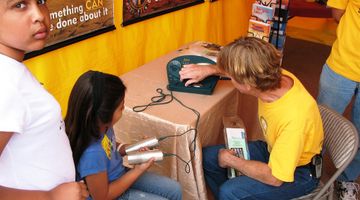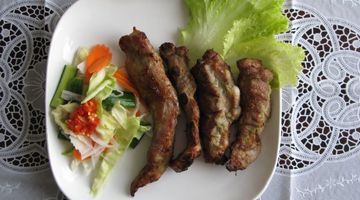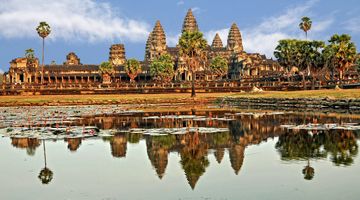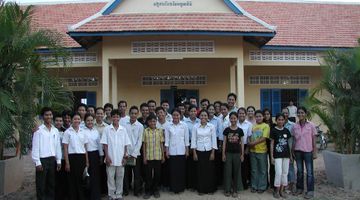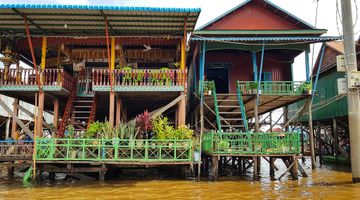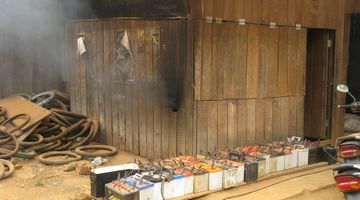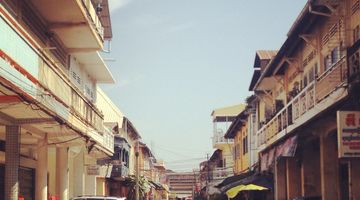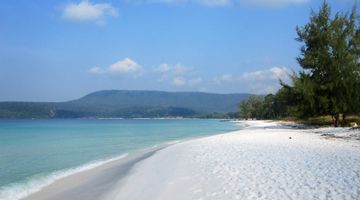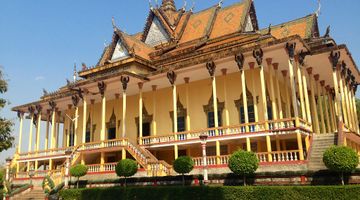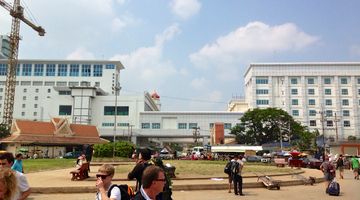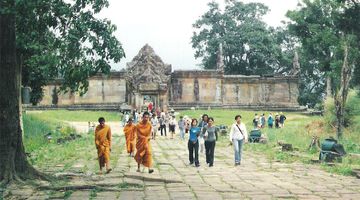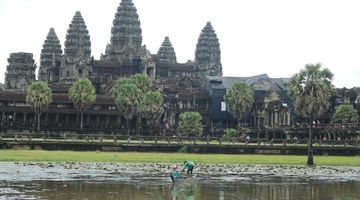Culture of Cambodia – Main Values, Religion, Traditions
The culture of Cambodia is one so interesting that individuals from the world over travel to the Kingdom’s shores for a taste of it all. From the temples, to the historical sites, to the soft smiles on the faces of young monks, there is just so much to see, feel, and experience here in Cambodia.
Historical roots
Ancestors of the Khmer people are thought to have arrived in the Angkor area between 5 and 10 thousand years ago. Good fishing opportunities lead them to the shores of Tonle Sap Lake. The first contact between the Khmers and the Indians is thought to have happened around A.D. 100 while traders were looking for a maritime route through to China for trading purposes. Since then, the introduction of Buddhism, and the adaption of the animistic Khmer culture to it has led to what the culture is today – a fantastically spiritual, and rare way of being in the world.
The main values in Cambodia
Cambodia is a land that is, in some ways, massively different from the ways of the Western world, and in other ways, exactly the same. Family, religion and various traditions are important in both cultures. However, the exemplification of these values is so very different from the traditions and practices of each of the disparate worlds.
Family
Family, and service to that family, is of great importance in the culture. Interestingly, commitments to the surrounding community, and any ties to members outside of the family are also taken very seriously. So seriously in fact, that these responsibilities are on par with one’s commitments to their own family.
Time
Cambodia, is by and large, a rural society. Without the time-bounded endless demands that we have become so accustomed to in the Western world, Cambodians’ relationship with time has taken on a very different form. Rather than being so time-focused, people are more event-focused. This means that rather than taking your cue for lunch from the time on your watch, lunch will happen in accordance with the proceedings of the day. Sometimes it will be earlier, sometimes it will be later. Things happen more intuitively and organically, simply because there is no need to schedule them.
Relationships
People in Cambodia place great value on interpersonal relationships. One’s relationships with others dictate their prioritization of time – which is just such an interesting concept! Rather than our loyalties and priorities lying within ourselves and our needs, the needs of others, and one’s relationship with them, supersedes the importance of the self.
Fatalism
Cambodians also live their life with a certain sense of reduced accountability and a rather fatalistic outlook. The power of the self to intervene in the course of life’s events, or to enhance one’s prospects, is significantly diminished. Individuals are often resigned to whatever lot they face, making peace with what is. While this is a difficult pill to swallow from the standpoint of countries that thrive on entrepreneurship and ambition, whose to say which standpoint is more productive to your well-being?
Traditional roles of men and women
The structure of the nuclear family unit in Cambodia was incontrovertibly altered as a consequence of the horrific Khmer Rouge. Millions of family members were lost in this time, which has left a staggering amount of families without two parents, and without sufficient adult company to run the affairs of the household.
Because so many families lost members in the Khmer Rouge era a household can consist of a wide range relative combinations. Single-parent families led by a widow are relatively common. Member of a household commonly share work, food and resources.
Legally, the husband is the head of the Khmer family. As was the hard rule in days gone by in the Western world, the husband is responsible for providing shelter and food for the family unit – not an easy responsibility to have on your shoulders! Husbands/men are also responsible for physically demanding tasks, like ploughing and harrowing the rice paddies, threshing rice, and caring for cattle. They are also expected to take care of the carpentry needs. Again, not easy. At least they’re not expected to deal with IT problems, a failing WiFi connection, and the issues associated with a teenage girl running free in a shopping mall.
There is a distinct double standard, and undeniable level of sexism within the country – especially within more rural parts of the land. Men are usually significantly more educated, with at least 10 years of instruction behind them. Females, on the other hand, are drastically under-educated with as little as 16 percent of girls in the country enrolled in school. While wages may be insufficient nation-wide, it is true that as little as 6 percent of females actually get paid for their work.
As such, the role of the wife/woman rarely stretches beyond the confines of the household. Because of the atrocities of the Khmer Rouge, thousands of women have been forced to be exceptionally strong in Cambodia, taking responsibility for things that would usually be shared by a household with more than parent. Women often perform the same sort of labour intensive activities that men do. Above and beyond washing and caring for the house, women will do work in the fields, produce other goods, and involve themselves in trade and exchanges.
The ability of single mothers to do it all is nothing short of a miracle, and is testament to the strength of human character. Women are also the spiritual heads of the household. They guide and educate children around religion and ethics and steer them toward the light.
Religion and traditional beliefs
Religion in Cambodia is believed to have been largely influenced by the oceanic merchants who sailed through the Gulf of Thailand on their way through to China. It is thought that the Indian culture was such introduced to the land, until it’s religious beliefs were first assimilated by the then Funan Kingdom.
Buddhism
As such, there is a very large Buddhist following within the country, as there is in the whole of South East Asia. About 90 per cent of the Cambodian population are Theravada Buddhists. It is a tolerant, non-prescriptive religion that doesn’t necessitate a belief in a supreme being.
Hindu
Hindu found it’s way into Cambodia around the same time that Buddhism did. It was, and still is, one of the official religions of the state. Angkor Wat, is in fact a Hindu temple – the largest in the whole world!
Islam
Islam is another official religion of the Kingdom. The numbers of practicing Muslims were decimated during the Khmer Rouge to the point of unifying the straits of religious sects. Today, there is still a strong portion of the country who make their way to Malaysia to study the Qurán, and also some that make the pilgrimage to Mecca.
Christianity
Christianity is an almost non-existent religion in the country. Small missionary centres in Battambang and Siem Riep converted around 2000 people in the early 1960’s.
While the country is most prominently Buddhist, the practices, architecture, and the integrity of those practicing alternate religions are well respected in Cambodia. The very tolerant and accepting nature of Buddhism is to be given the credit for this.
Arts & architecture
Throughout Cambodia’s eventful, and at point’s turbulent history, religious principles have guided and inspired the arts.
The unique Khmer style that can be witnessed at the wats and museums are the result of an amalgamation of the indigenous animistic beliefs and the once Indian religion of Buddhism. The thousands of years since this initial melting pot of cultures has produced truly beautiful art and architecture.
When viewing a sculpture, or art piece, the underlying religious principles are extremely evident. The pieces carry a certain grace and beauty, an acceptance and poise – all of which are so valued by the Cambodian people.
There are many examples of Khmer sculpture throughout the country. The style is entrancing and soothing. You will often see Hindu deities depicted with expert style and ability. Take the time to really take them in!
The houses of ancient Khmers vary very little from the houses that you may find in the villages of modern Cambodia. Houses were very elevated off the ground and built largely from wood. The walls were made from bamboo, and the roof covered with thatched leaves or coconut palms.
Interestingly, as the case in the Western world, architecture and decoration indicates social standing. In today’s age, impressive structures are more an indication of wealth than of political or social power. However, the various homes in the rural parts of Cambodia are linked with the social standing of the families. Dignitaries homes were bigger, built of stronger wood, and had tiles on their roofs. Rather than simply being beyond the budget of a laymen, creating homes that resembled those of a class beyond one’s own was thought inconceivable by the very nature of its incompatibility with one’s own social standing.
Traditional dress
Having traditional attire that is used so frequently really is a special thing. Far from the once a year adornment of the Scottish Kilt for a wedding, the traditional attire of Cambodia is throughout the year. Special, occasion based outfits will be seen several times a year, and will be hard to miss with the bright colours and intricate designs. Much of the traditional wear is made from golden silk, crafted with patterns and designs unique to Cambodia.
Beyond the elegant and colourful traditional outfits, there a are a handful of things that people wear on a day to day basis – some with such usability, you’ll be unimpressed with the singular function of your jeans. A karma is a thin towel-sized piece of fabric, more practical than a Leatherman. They are often wrapped around people’s heads for protection from the sun, are used as a sarong, and are used to carry things in. They are even utilised as a fashion accessory! Ha! How different things can be.
The Sampot is the national garment of the Kingdom. It is a form of sarong that is worn by men and women who are the envy of every ill-equipped, sweaty and uncomfortable traveller.
Traditional dance
Dance is a revered art form in Cambodia. It is said that Cambodia was created between a king and a heavenly dancer. As you can well imagine, dance is popular in the Kingdom. You will often see dancers plastered onto big posters, you will see it happening in the streets, in plays, and even on the walls of Angor Wat.
There are three kinds of dances in the country. Folk, sacred, and classical. Of the three, classical dance is the most prevalent in the country today. The artform must fight against the pressures of modern forms of entertainment and the decreased level of transmission of the tradition from generation to generation.
Traditional food
Cambodian traditional cuisine is all about noodles, soups, curries, and a host of grilled and fried bits and pieces.
Cambodians are especially good at creating pastes of things. The combination of the fresh ingredients, and some mystical process (fair assumption) leads to the product being so much greater than the sum of its parts.
Among the most popular of ingredients is fish paste, and prawn paste. You’ll find that whether you are ordering Fish Amok, or a grilled crab at the seaside, there’ll be some in, or some on your table! You’ll quickly become very happy about this.
Traditional celebrations
Cambodia has so many, just so many incredible festivals that make a journey to the country for that alone a good idea. Among the most popular is the Khmer New Year. In the early days of April, three days of celebrations fill the streets of the big cities. Peoples homes are incredibly decorated, and there is a look of hope and thankfulness written on each person’s face. There is also a good amount of talcum powder on their faces too.
The water festival is another special one. Be sure to be around Phnom Penh in late October for this one. Celebrate the turning of the tide in the Mekong river in the grandest of fashions, and everything that this makes possible for the Cambodian people.
Other important festivals include Independence Day, Pchum Ben, and Royal Ploughing Day.
Conclusion
The culture of the country is incredibly rich and diverse, with so much to see you may not know where to look. A trip to the country will deepen your appreciation for the human condition, it’s incredible complexity, and the astounding variety of what is essentially the same thing repeated billions of times. Come to Cambodia, come see it all!
